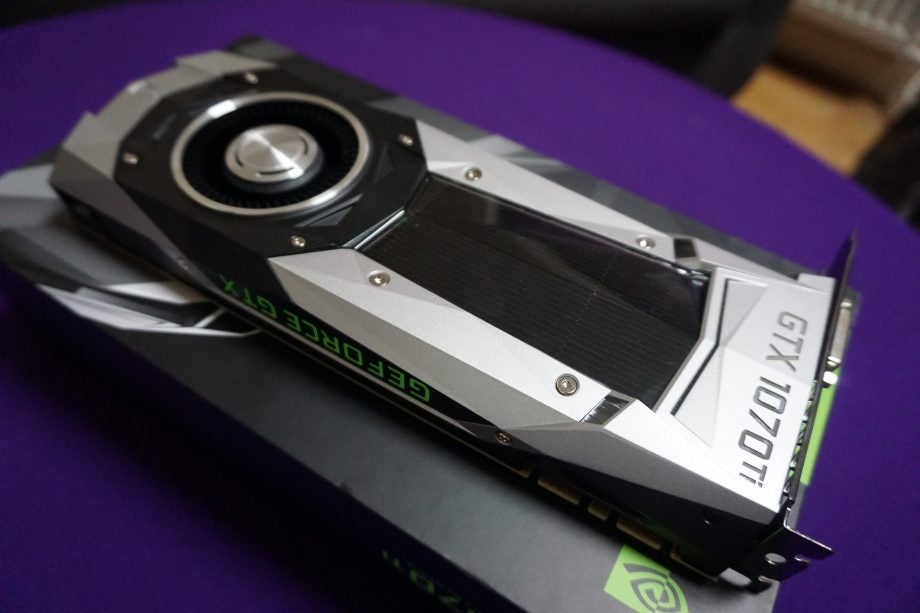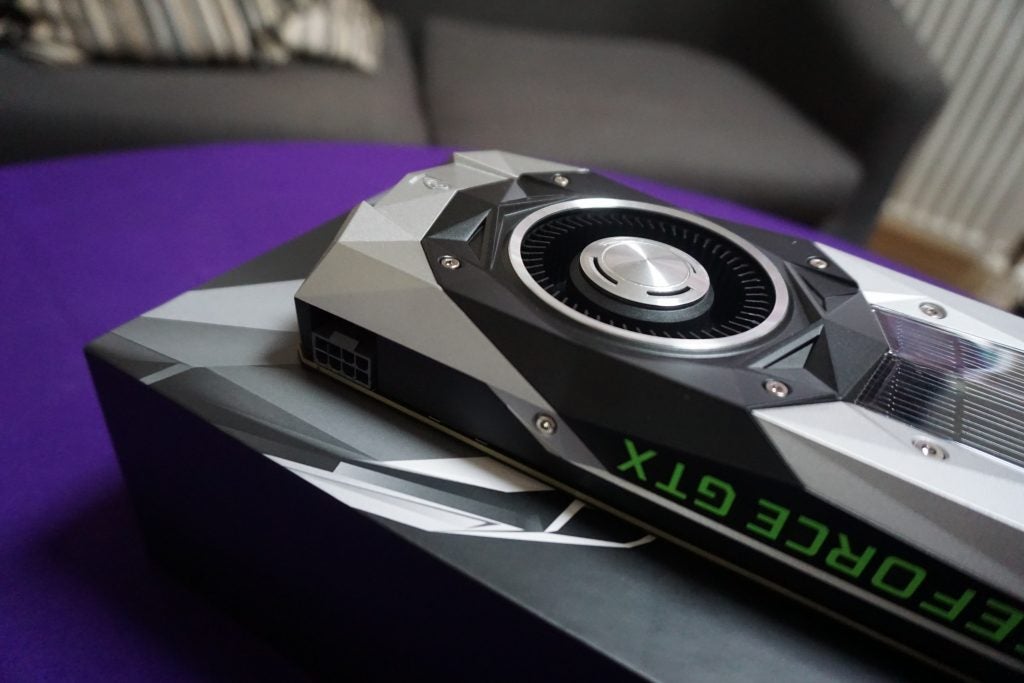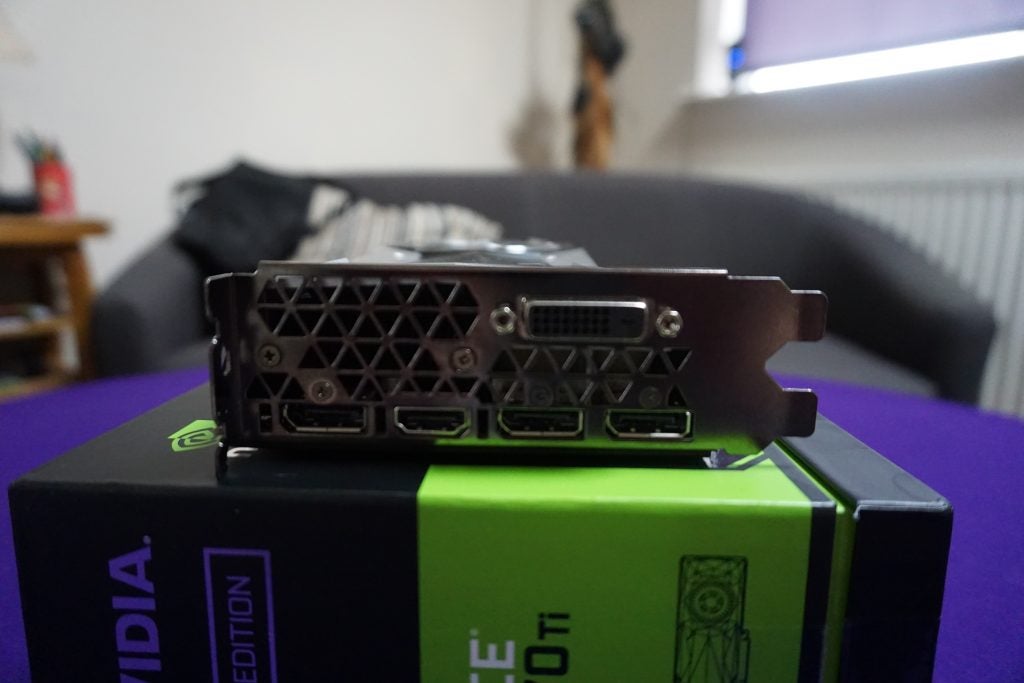Nvidia GeForce GTX 1070 Ti Review
Nvidia GeForce GTX 1070 Ti Review
Our new 1440p card of choice, for now

Sections
- Page 1 Nvidia GeForce GTX 1070 Ti Review
- Page 2 Nvidia GeForce GTX 1070 Ti – Performance, overclocking and conclusion Review
Verdict
Pros
- Plays AAA games at 60fps in 1440p
- Solid VR performance
Cons
- A little late to the party
Key Specifications
- Review Price: £419
- 2432 CUDA cores
- 1607 MHz base, 1683 MHz boost clock speeds
- 3 x DisplayPort 1 x HDMI 2.0, 1 x Dual-Link DVI
- 180 Watts TDP
- 8192MB GDDR5 video memory
- VR-ready
Editor’s Note: The GTX 1070 Ti is about to get a welcome update that’ll add support for ray tracing. Nvidia confirmed it’ll be adding ray tracing support to RTX cards via a driver update at its GTC keynote earlier in March.
The update will roll out at an unspecified point in April and should radically boost graphical detail on compatible titles. Ray tracing is a technology debuted on Nvidia’s RTX-series, Turing cards. The tech lets cards render more realistic shadows, lighting effects and shadows. We’ll be updating this review once the update rolls out. Check back then to find out how the GTX 1070 Ti handles Ray Tracing.
What is the Nvidia GeForce GTX 1070 Ti?
The GTX 1070 Ti is one of Nvidia’s weirder cards. Sitting between the 4K-focused GTX 1080 and mid-level GTX 1070, the new Ti feels a little like a play to make a quick buck before the end of the year, using cobbled-together spare parts.
The feeling isn’t helped by Nvidia’s marketing, which pitches the card as being tailor made for 1440p gaming and virtual reality, two areas it originally pitched the 1070 as covering. Times change, of course, but it’s been 18 months since the GTX 1070 originally launched so that’s quite a wait.
But if you take the time to delve a little deeper you’ll find the 1070 Ti is actually a pretty interesting beast, and a solid choice for people yet to make the jump to Nvidia’s new Pascal architecture.
Related: Best GPUs

Nvidia GeForce GTX 1070 Ti – Specs and technology
The 1070 Ti uses the same Pascal architecture and GP104 GPU as both the 1070 and 1080, but in a different configuration.
Pascal is the successor to Nvidia’s previous Maxwell GPU architecture. It improves on Maxwell using a smaller manufacturing process that reduces the chip’s fabrication nodes from 28 nanometres to 16nm.
The Pascal architecture lets Nvidia stack more transistors onto the smaller piece of silicon, in theory increasing performance while reducing relative power consumption. It’s because of this that the GPU has a reasonable 180W TDP (thermal design power), which is pretty good by Ti standards. In the past, top-end Ti-branded cards have been rather power-hungry.
But that’s old news: the world knows what Pascal is capable of, and the 1070 Ti offers little in terms of surprises.
Outside of this, the 1070 Ti is closer to a GTX 1080 than a GTX 1070 when it comes to specs. The 1070 Ti’s 2432 CUDA core count puts it well ahead of the GTX 1070 (1920 CUDA cores) and just shy of the GTX 1080 (2560 CUDA cores). CUDA cores are the foot soldiers of a GPU that do the majority of the computational heavy lifting.
Related: Best gaming PC
The 1070 Ti’s 1607MHz clock speed is also far closer to the 1080’s than the 1070’s, which has a slower 1506MHz base clock speed. If you look at the price this makes the Ti pretty reasonable on paper. The Founders Edition of the GTX 1070 Ti will retail for £419 in the UK, making it £60 more expensive than the 1070 and £70 less than GTX 1080.
The only serious compromises you’ll find between it and the 1080 are the 1070 Ti’s slightly slower memory and boost clock speed. The 1070 Ti’s 8GB of GDDR5 memory will run at 8Gbps. The 1080’s 8GB of GDDR5X has a nippier 10Gbps memory speed. Similarly, the 1070 Ti’s 1683MHz boost clock speed puts it behind the 1080’s 1733MHz.
The boost clock speed downgrade will impact how overclockable the 1070 Ti card is, which will impede how much extra performance overclockers and third-party manufacturers will be able to get out of it.
The 10.5-inch, double-height Founders Edition card’s port configuration is also pretty par for the course, featuring three DisplayPorts, plus single HDMI 2.0 and Dual-Link DVI connectors. VR fans looking to use an Oculus Rift or HTC Vive will bemoan the lack of a second HDMI, but a DisplayPort converter will fix the issue fairly easily, and the single connector will cover Microsoft’s new wave of Windows 10 virtual reality headsets.
All in all, this adds up to mean the 1070 Ti is a fairly impressive card that, in our tests, plays AAA games with their graphics maxed in 1440p at over 60fps.


